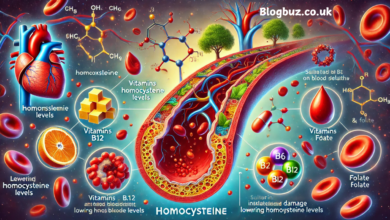The Decision Dilemma: Why Choosing a Rehab Facility Is Harder Than It Looks

You’ve admitted there’s a problem. You’ve acknowledged that recovery isn’t optional—it’s essential. But just when it seems like the hardest part is over, another challenge appears: choosing where to begin.
Finding the right rehab facility can feel overwhelming, even paralyzing. With countless treatment centers, program styles, and detox options available, the decision quickly shifts from hopeful to stressful. What should be the starting point of healing can feel like a high-stakes puzzle with too many pieces.
This isn’t just about picking a place—it’s about trusting one with your life, your time, and your future. And for many individuals and families, the weight of that choice becomes a major emotional and logistical hurdle.
The Myth of the “Best” Option
A common mistake is looking for the so-called best rehab—an idealized place that promises immediate transformation. But in reality, there’s no universal best. There is only what’s best for you, and that distinction matters.
Addiction is complex. So are people. What works for one person may fall flat for another. Some need clinical detox. Others need emotional grounding. Some need quiet and solitude. Others heal through group connection.
Instead of asking, “Which rehab is the best?” the better question is, “Which rehab meets my needs, values, and current readiness for change?”
Facilities like Summit Estate understand that personalized alignment is more important than blanket promises. Healing happens when treatment meets you where you are—not where someone else thinks you should be.
The Emotional Pressure Behind the Choice
There’s an emotional minefield that comes with this decision. Fear of choosing wrong. Guilt for waiting this long. Anxiety about cost, time, or disruption to daily life. All of this can cloud clarity.
What’s often overlooked is that decision fatigue is real. Especially in early recovery, when your mental clarity may still be compromised, big decisions can feel heavier than usual. The risk is rushing into a choice—or avoiding it entirely—out of pressure.
Take a breath. This is a significant decision, but it doesn’t need to be perfect. It just needs to be intentional.
Factors That Truly Matter
Amidst the overwhelming marketing and terminology, here’s what really deserves your attention when choosing a rehab facility:
1. Detox Capabilities
If you’re physically dependent on substances, medically supervised detox should be non-negotiable. Withdrawal symptoms can be painful, even dangerous, and should never be managed alone. Ask whether detox is available on-site or requires a referral.
2. Treatment Philosophy
Different centers take different approaches: 12-step, cognitive behavioral therapy, holistic wellness, medication-assisted treatment. Take time to research these methods. The right match will resonate—not confuse.
3. Staff Credentials
Look for licensed, credentialed professionals. Therapists, counselors, medical personnel—all should have verifiable qualifications. Comfort with staff begins with confidence in their training.
4. Environment and Setting
The space where you heal matters. Whether it’s a serene landscape or a private, home-like atmosphere, the physical environment should support reflection and growth.
5. Aftercare Planning
Recovery doesn’t stop at discharge. Ongoing support—through counseling, alumni programs, or structured follow-up—should be part of the program from day one.
Hidden Influences: Cost, Stigma, and Timing
Beyond clinical needs, many other pressures weigh on the decision. Financial constraints may limit access. Insurance coverage can dictate what’s “possible.” Social stigma can delay the decision altogether.
Timing also complicates matters. People want fast fixes. Employers want short leaves. Families want reassurance. But rushing the process can lead to poor fits, half-finished treatment, or even early dropout.
If you can, allow space for thorough research. Reach out to admissions teams. Ask questions without fear of judgment. Choosing the right addiction treatment isn’t indulgence—it’s self-preservation.
The Noise of Online Information
Search engines flood you with options, most claiming high success rates and testimonials. But digital polish doesn’t equal quality care.
Instead of relying solely on online claims, try to:
- Compare services, not just slogans
- Ask for a sample schedule or treatment outline
- Find reviews from neutral platforms, if available
- Talk to someone directly—email can only tell you so much
Transparency, responsiveness, and consistency in communication can reveal a lot about how a rehab center operates.
Listening to Internal Signals
Beyond the data and details, trust your instincts. Pay attention to how you feel during your interactions with a facility. Do they speak to you like a person or a prospect? Do they give you space to ask questions—or rush you toward enrollment?
Your comfort level isn’t just a “nice to have.” It often predicts how engaged you’ll be in treatment. If you don’t feel safe or respected now, that feeling won’t improve later.
Making the Decision with Confidence
No rehab can guarantee transformation. But the right one can create the conditions for it. You’re not choosing a miracle—you’re choosing a partner in your recovery process.
Summit Estate is one of many facilities that emphasizes this collaborative approach. They recognize that you bring something to the table, too—your commitment, your story, your willingness to grow. A good treatment center honors that and builds around it.
This is not about handing over your healing. It’s about stepping into it with support that aligns with your needs and values.
Final Thoughts: From Dilemma to Direction
Choosing a rehab facility may feel like a maze. But it’s not a test you have to ace—it’s a process of alignment. When you stop searching for perfection and start looking for fit, the path becomes clearer.
This decision may be hard, but it is also a turning point. With every question you ask, every fear you face, and every doubt you examine, you’re already doing the work of recovery.
That work begins the moment you say, “I want something better.” Choosing where to begin is simply the first step of that better.




